The content of the article
The guinea pig is a rodent with a beautiful and silky coat, good-tempered and docile character. The guinea pig, despite its name, is an absolutely land animal that is afraid of water and does not belong to any class of pigs. This rodent was first named a pig because of the structure of its skull and elongated elongated body. In addition, this rodent is the most talkative, and expresses any of its emotions with a kind of squealing and grunting. The piggy has nothing in common with the sea, but it is so called because it was originally called “overseas”. Subsequently, the name was abolished, and the rodent remained a simple guinea pig.
But the name “sea” does not give rest to many owners. Intuitively, it seems to them that the animal needs regular (or even daily!) Bathing.In fact, it is not. In nature, the guinea pig does an excellent job of caring for its coat on its own, licking itself with the tongue and smoothing its paws. In addition, the rodent is quite clean, so it often does not need water procedures. However, sometimes the animal needs human help.
When to bathe a guinea pig
- The guinea pig needs to be washed if lumps, mats, and polluted areas form on its wool. This happens with rodents if they are walking in street enclosures in the warm season.
- The animal needs bathing if the fur has become dull and has lost its normal appearance. Often such an animal tries to “wash” itself, but it fails with it.
- Often, breeders bathe animals before important exhibitions, where the rodent should look perfect.
- An animal will certainly need water procedures if an unpleasant smell starts to emanate from it.
- In the place where the rodents have a tail, there is a sebaceous gland. It produces a special secret that serves to attract the opposite sex. Normally, the sebaceous gland is a greasy, oily patch of bald spot.If in place of the sebaceous gland formed crusts and growths, then it is time to redeem the mumps.
Only these compelling reasons can be a serious reason for bathing an animal. For idle fun bathing pig once again not worth it.
When you can not bathe a guinea pig
There are times when swimming of the guinea pig should be postponed until better times.
- You can not bathe a small rodent, until he became an adult. The fact is that small guinea pigs are subject to various kinds of stress. Moreover, their young and clean wool still does not need washing.
- If you brought the animal home for the first time, let it settle for at least a few days. No need to drag the rodent into the bath from the threshold.
- Pig can not bathe in the winter. Guinea pigs are very sensitive to temperature extremes and drafts. If you bathe them in the cold season, they can catch a cold.
- You can not bathe pregnant females - for them it is a big stress.
- Do not bathe an animal if it is sick.
- If the rodent cries hard and pulls out of hands, put off bathing. It can be replaced by simply wiping the wool with a clean, damp cloth.
Only after you weigh the pros and cons, can you decide to swim the guinea pig.
How to prepare an animal for swimming
Any sudden action, and even more, immersion in water, which is dangerous for the animal, will be taken with aggression and panic. Therefore, the pig must be prepared in advance for the fact that in a few days it will take a bath.
3-5 days before bathing, take the pig in your arms and go with it to the bathroom. If the animal starts to be frightened and will be wary of an unexpected situation, calm it down with your voice, give your favorite delicacy, stroke the pet. You can comb the fur in the bathroom - the pigs love this process and quickly calm down. When the rodent gets used to the situation, you can put it in a basin or a dry sink - where you are going to carry out a bath procedure. The last stage of habituation - turn on the water in a thin stream, not directing it to the fur of the animal. The baby will feel the paws of the water and will no longer be afraid of the noise of flowing water.
How to bathe a guinea pig
If the long and patient stage of preparation for the bathing day has passed, you can proceed to the procedure itself.
- In advance, 15 minutes before the procedure, lubricate the sebaceous glands with any cosmetic oil. This will allow the crusts to soften and easier to move. This is not difficult to do - just apply vegetable oil to a cotton pad and wipe the glands. Be careful - try not to stain the animal's fur.
- Put on gloves before washing your mumps. Indeed, before the eyes of danger, even the most good-natured pig can begin to bite and scratch.
- It is most convenient to bathe the guinea pig in the sink. You do not need to bathe the animal in a bath or basin - high sides will cause the animal to jump. Gilt in soap form is very slippery, and it will be difficult to keep. In addition, a fall, even from a small height, is fraught with injury and even death for the mumps.
- Close the sink and drain enough water to touch the belly of the animal. Lay a small cotton napkin on the bottom of the sink so that the animal has something to grab onto its paws. So the rodent will feel more confident.
- Dip the mumps into the water, while calming the animal with strokes and gentle words.
- Carefully moisten the rodent's hair with your hands.If the wool is long, you can water the animal with a small scoop or glass. Be careful not to lift the container too high above the rodent - it can be dangerous.
- When the coat is damp enough, apply a drop of shampoo on your hand. For guinea pig washing there is a special shampoo that is sold in pet stores. You can also use shampoo for rabbits or cats, but dog hygiene products are not suitable - they are too aggressive. Do not just wash the animal with a simple soap - a large number of acids will make the pig's hair hard and brittle.
- Foam the shampoo in your hands and apply the pig on the hair. Soap should not fall on the head, the maximum you can only wash the neck of the animal. Gently wash the area of the sebaceous gland and remove the softened crusts.
- After that, the wool can be washed. This should be done very carefully, pouring a rodent with a ladle or shower. Beware of water in the eyes and ears of the mumps. In addition to the usual fright pet can get conjunctivitis and otitis media.
- If the pet is long-haired, after washing with shampoo a little balm should be applied to the hair.It will allow wool to comb better, make it smooth and shiny. Hold the balm on the hair for a couple of minutes and rinse the animal.
By following these simple rules, you can easily redeem even the most capricious gilt.
Final procedures
If you have redeemed the animal, do not think that your mission is complete. You need to perform a few more manipulations to make your piggy well.
After the bath you need to clean the sebaceous gland and anal pocket. After washing in place of the sebaceous gland, there certainly were no crusts and no dirt left. Gently wipe this area with a cotton pad or cotton swab, and then treat it with any antiseptic compound, such as chlorophyllipt. Then you need to handle the fecal pocket of the animal. To do this, gently push down on the rodent's lower abdomen, the pocket will bulge and you can clean it with a cotton swab dipped in oil. Be very careful not to create excessive friction. This cleaning should not be done too often, but you should not neglect it. It is usually held once a month.
Try to dry your pet as soon as possible.Use a comb and hair dryer for this, if the pig is not very afraid of the frightening sound. If the animal is torn in fear, simply place it in a dry towel and change the fabric periodically.
A guinea pig after swimming can not be taken out on the street for about a day. Do not leave the animal in a draft and in cool rooms. Do not let the pig in a cage with sawdust - dry filler will stick to the wet wool. And do not forget to treat the rodent with his favorite delicacy - he endured the tests prepared for him.
Video: how to wash guinea pig

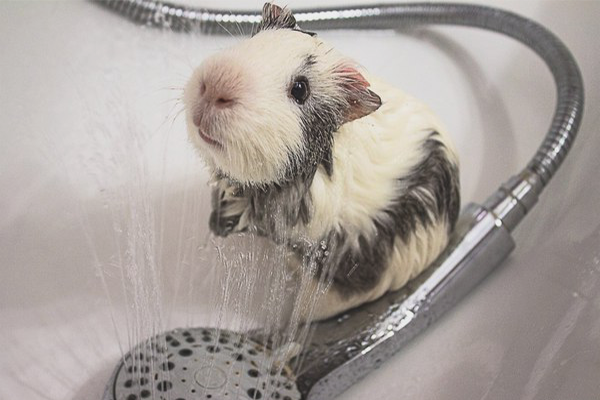
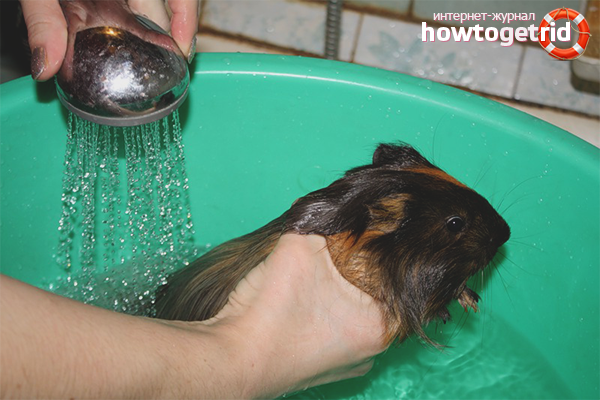


 5 votes, on average: 3,40 out of 5
5 votes, on average: 3,40 out of 5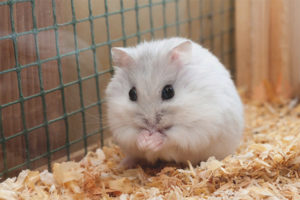
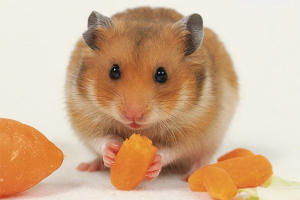
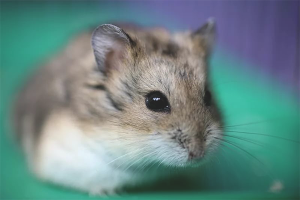



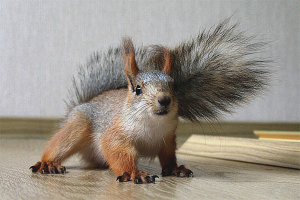
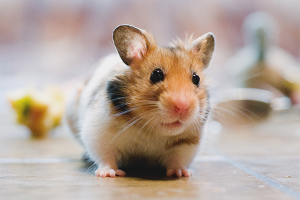
To send